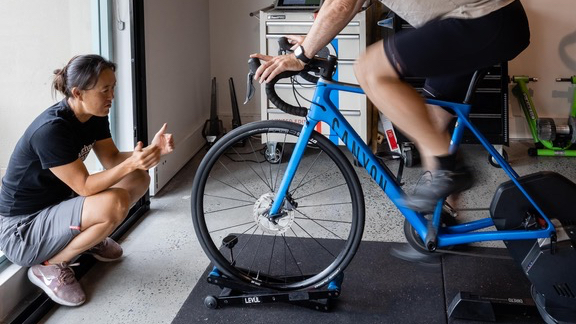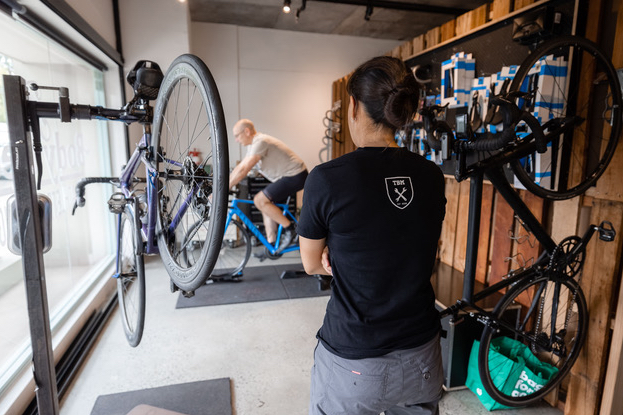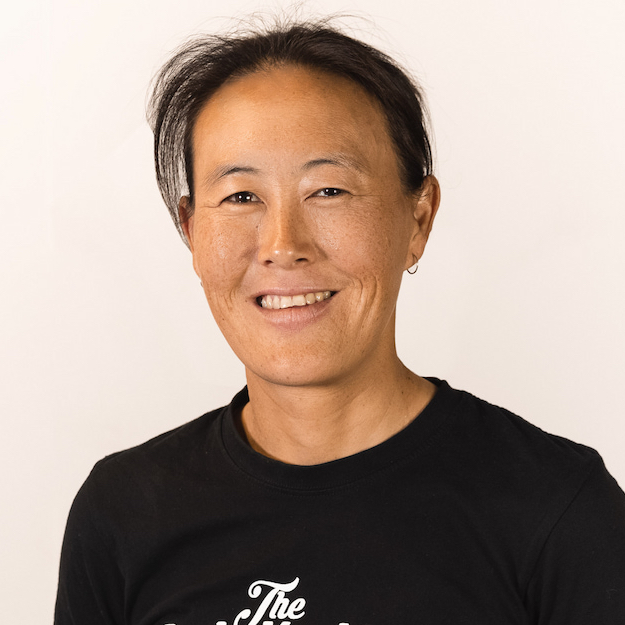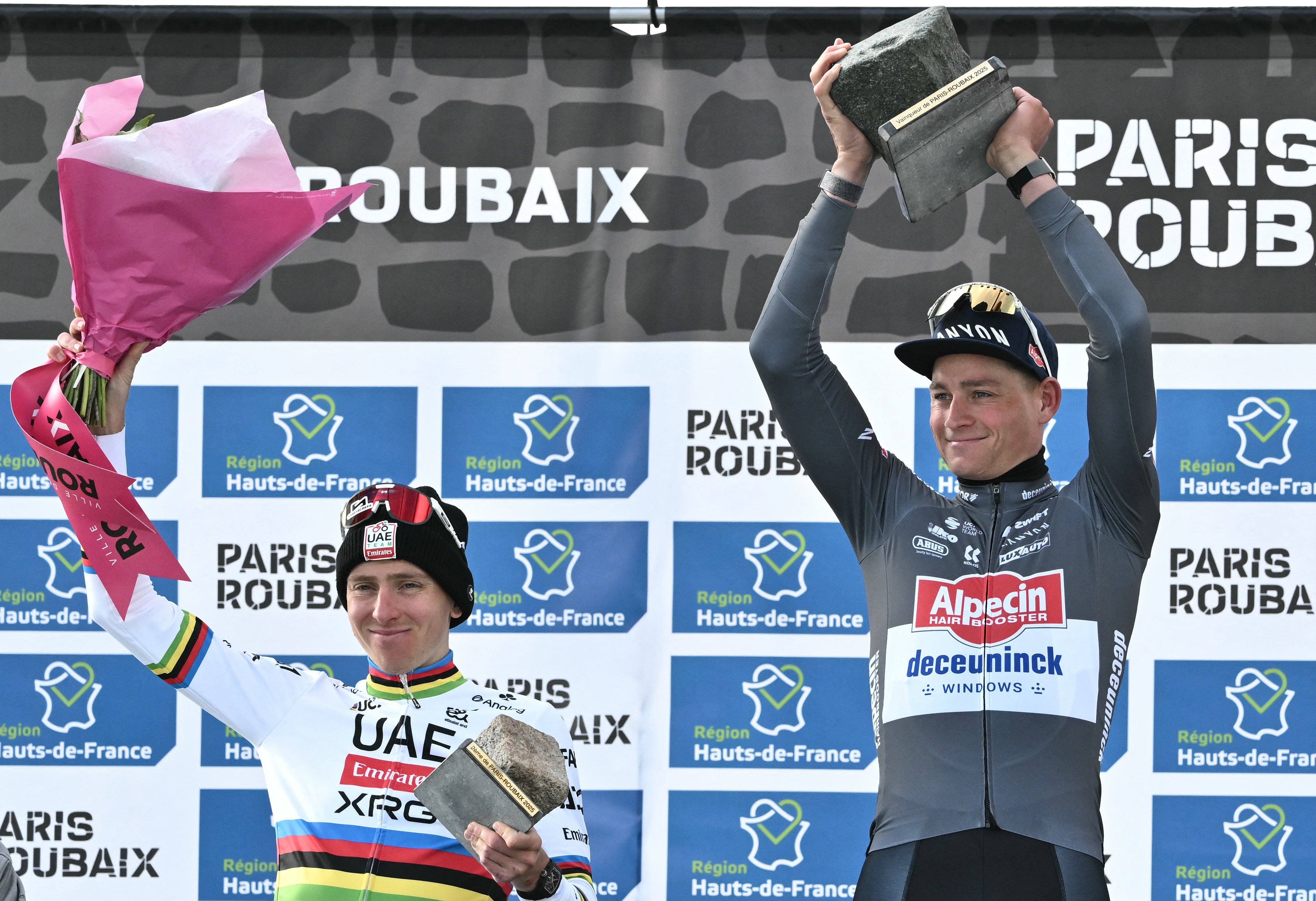I'm a bike fitter – these are the seven most common mistakes I see people making
Produce more watts and pick up fewer injuries by avoiding these positional pitfalls

With a plethora of articles and YouTube videos out there offering online bike fitting advice, a lot more riders are trying their hand at DIY bike fitting. Hopefully this allows for a more educated cycling population and less discomfort and injury resulting from poor bike fit.

However, I do still see some common patterns when it comes to self-fitting of bikes. Something I see regularly is a rider formulating an idea on how to solve their issue, but making dramatic adjustments when a small change might have been all that was needed. Another is creating a new issue in an attempt to solve a different one, without understanding how many aspects of bike fitting are inter-related.
Below are a seven specific mistakes that I commonly come across…

Nicole Oh is a Sydney born and trained physiotherapist who has just returned to her homeland after spending the greater part of two decades living and working in the UK.
Nicole’s interest has always been in the treatment of sports injuries, as well as biomechanical assessments and sports injury rehabilitation. She has also completed training in acupuncture and clinical pilates.
As a competitive road racer herself, in the UK Nicole competed at national level with Les Filles Racing Team, a women’s team she co-founded and managed.
1. Pushing the saddle forward to decrease reach
If the reach of the bike is too long, many people will push the saddle forward to shorten it. This then puts too much weight on the front end of the bike and an increased load on the upper body, which can result in pressure, pain, numbness or tingling in the hands or wrists, and increased tension and pain through the neck, upper back and shoulders. There may also be an over-reliance on the quad muscles and increased loading of the knee joints. The stability of bike is also affected with the rear wheel being less weighted, leading to poor handling,
Saddle fore-aft should not be used to adjust the reach of the bars; rather the length of the stem and/or handlebars need to be changed, or a bike with different geometry considered.
2. Tilting the saddle down excessively to offset saddle discomfort
An inappropriately tilted-down saddle can increase tension through your quads (and hence knees) as you brace yourself from sliding forward, increasing weight going through your upper limbs, causing hand or wrist pain.
Many people tilt their saddles down excessively in an attempt to relieve perineal pressure or numbness. The discomfort may be the result of the saddle not being set in the correct position, often too high.
Get The Leadout Newsletter
The latest race content, interviews, features, reviews and expert buying guides, direct to your inbox!
Or it may simply be the fact that the saddle you have isn't the right one for you – we are all individuals and what works for one person may not work for another. It could be the wrong width, shape, firmness or have an inappropriate cutout for your needs.
Discomfort (and instability) can result if the pelvis is not supported as a result of the saddle being too narrow for your anatomy and riding position. The cutout may not be wide enough, or even too wide, both of which can lead to issues.
3. Handlebars too wide
Most bike manufacturers supply bikes with handlebars wider than the average measured shoulder width, particularly when it comes to women.
Handlebars that are too wide may cause the rider to bend the wrists back (hyperextend) to try to achieve a narrower shoulder position, or increase the reach to the hoods. This can lead to pain particularly in the upper limbs (wrist, elbows, shoulders) and neck.
The handlebars can usually be changed at point of purchase, although often at an extra cost. With many bikes now coming with integrated cockpits, the cost is that much greater.
4. Cleats too far forward
Cleats that are set too far forward can encourage a toe-down, unstable foot position, tingling and numbness in the foot and toes, and an over-recruitment of the calf muscles. Placing the cleat slightly behind the ball of the foot often decreases compression of nerves and blood vessels under the metatarsal heads, minimising the chances of experiencing foot symptoms. Effectively reducing the length of the lever arm from the ankle pivot point decreases load on the calf and makes it easier to stabilise the foot.
Anecdotally, many people report feeling more powerful and stable, although research suggests there is no increase in power output with a more rearward cleat position.
Cleats set too far forward may also cause issues when climbing if the rider has a tendency to drop their heels, as many do. This can cause an overextension of the knee at the bottom of the pedal stroke, strain on the hamstrings, and rocking of the pelvis leading to low back pain.
5. Decreasing cleat float to stabilise the foot
Many riders will choose a cleat with less float in an attempt to decrease the amount of rotational movement on the pedal. However, if the foot is moving around unnecessarily on the pedal there is likely to be an issue with function or pedalling technique, foot stability, bike position or cleat set-up.
Float will allow the feet and knees to work outside of a set plane of movement and allow for compensation issues further up the chain, so it is safer to go for more float than not enough as a means of injury prevention. There is also more margin for error if the cleat position is not set perfectly with more float, or when the rider becomes fatigued.
6. Sizing up shoes because they are not wide enough
Many people buy cycling shoes that are just not wide enough for their feet, particularly around the toe box, resulting in issues with compression.
A common mistake is to size up to increase width, which then presents other problems such as the cleat holes being too far forward and hence being unable to position the cleat optimally, the foot slipping forward in the shoe, or the arch being located in the wrong position.
Shoes that are too big can also result in toe clawing as the foot tries to gain some stability, overloading the intrinsic foot muscles and leading to plantar fascia pain.
7. The wrong type of frame
These days, the majority of cyclists are recreational or sportive riders rather than competitive racers. Statistics from British Cycling in 2022 show that only 17% of its 150,000 members held racing licences. However, many people are opting for a frame that does not suit their physical capabilities or needs, often choosing one with an aggressive race geometry which has a relatively long reach and low stack. rather than a more endurance geometry.
Buying the wrong shaped frame is probably the most costly mistake and most difficult to correct. Changes to bike components and set-up can be made, although some changes are not ideal or may sacrifice handling and the feel of the bike, as well as the aesthetics.

Thank you for reading 20 articles this month* Join now for unlimited access
Enjoy your first month for just £1 / $1 / €1
*Read 5 free articles per month without a subscription

Join now for unlimited access
Try first month for just £1 / $1 / €1
Nicole Oh is a physiotherapist and bike fitter, with training in biomechanical assessments, sports injury rehabilitation, acupuncture and clinical pilates.
A competitive cyclist with a background in triathlon, Nicole raced at National level in the UK, also managing and co-founding the Les Filles Racing Team. Having moved to Sydney, she works as a physiotherapist at The Body Mechanic and continues to race competitively.
-
 The stats behind Mathieu van der Poel’s record-breaking Roubaix success
The stats behind Mathieu van der Poel’s record-breaking Roubaix successThe Dutchman's eighth success in a Monument underlined his standing among the Classics greats
By Peter Cossins Published
-
 'It was like a stone hitting my face' - Mathieu van der Poel calls for 'legal action' after bottle incident at Paris-Roubaix
'It was like a stone hitting my face' - Mathieu van der Poel calls for 'legal action' after bottle incident at Paris-RoubaixThe winner was hit by a bottle in the face on Templeuve, sector 8b
By Adam Becket Published